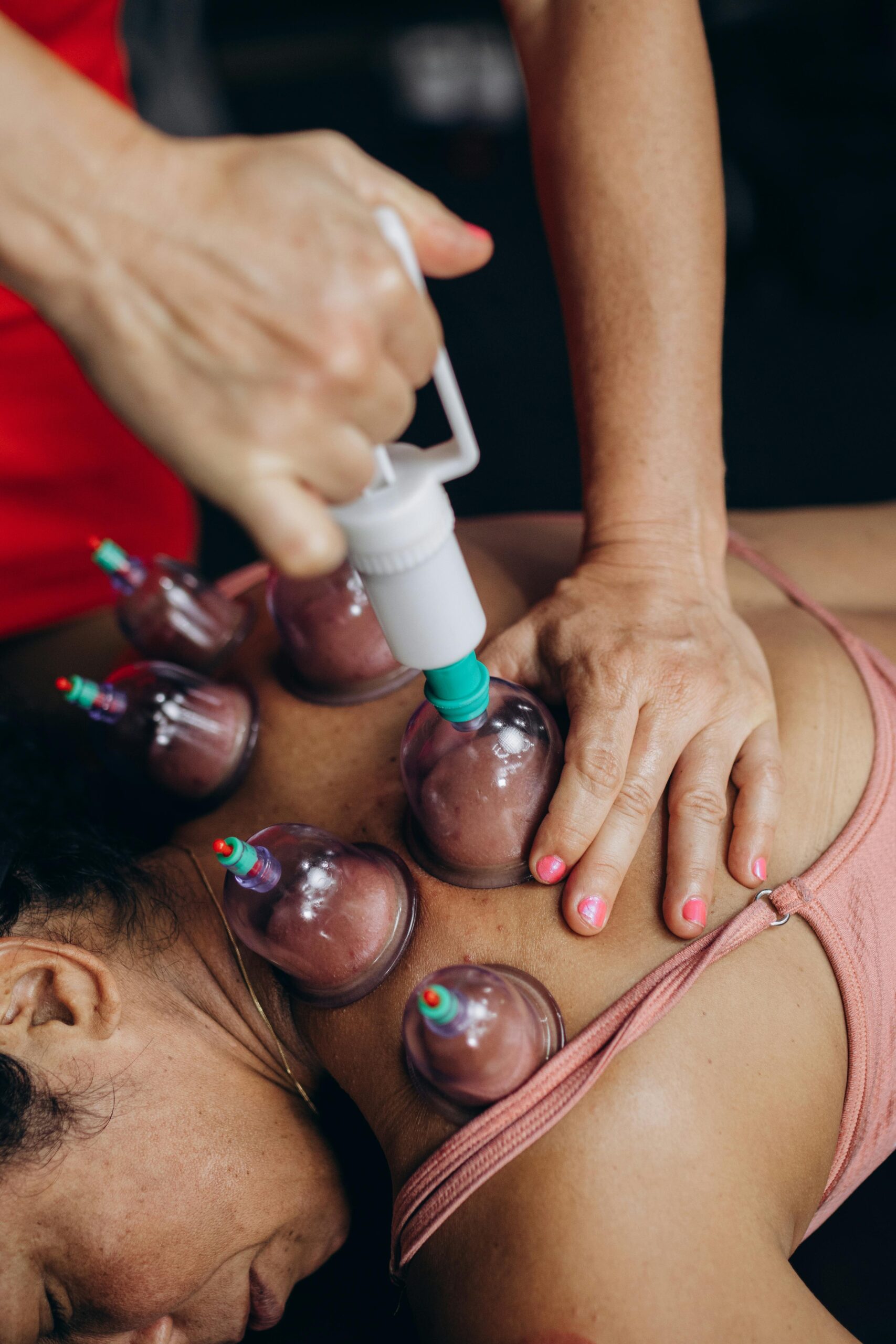Introduction
Hijama, also known as cupping, is an ancient therapeutic practice that involves creating suction on the skin using cups. It has been used for centuries in various cultures, including Arab, Persian, Indian, and Chinese. While it has gained popularity in recent years, many people are still unfamiliar with its benefits and potential risks. This article provides a comprehensive overview of hijama, delving into its benefits, side effects, and considerations for those considering this treatment.
Types of Hijama
Wet Cupping vs. Dry Cupping: A Comparison
Hijama, or cupping therapy, is a traditional healing practice that involves creating suction on the skin using cups. There are two main types of cupping: wet cupping and dry cupping.
Wet Cupping
In wet cupping, the practitioner first applies the cup to the skin and creates suction. Then, they use a sterile lancet to make small cuts or punctures in the skin beneath the cup. The suction draws blood from the cuts, which is then collected in the cup. This blood is believed to contain toxins and impurities that are removed from the body.
Steps involved in wet cupping:
- Cup application: A cup is placed on the skin and suction is created.
- Lancet punctures: Small cuts or punctures are made beneath the cup.
- Blood collection: Blood is drawn into the cup.
- Cup removal: The cup is removed, and the cuts are treated.
Dry Cupping
In dry cupping, the cup is placed on the skin and suction is created, but no cuts or punctures are made. The suction is believed to stimulate blood flow and improve circulation.
Steps involved in dry cupping:
- Cup application: A cup is placed on the skin and suction is created.
- Cup removal: The cup is removed.
Choosing between wet and dry cupping
The choice between wet and dry cupping depends on the individual’s condition and the practitioner’s recommendations. Some conditions may benefit more from wet cupping, while others may be better suited for dry cupping. It’s important to consult with a qualified practitioner to determine the best approach.
Key differences between wet and dry cupping:
| Feature | Wet Cupping | Dry Cupping |
|---|---|---|
| Skin punctures | Yes | No |
| Blood collection | Yes | No |
| Stimulation | Blood flow and detoxification | Blood flow and circulation |
Export to Sheets
Both wet and dry cupping have been used for centuries to treat various health conditions. While more research is needed to fully understand their benefits and risks, many people believe that they can be effective complementary therapies.
Benefits of Hijama
Hijama is believed to offer a wide range of health benefits, including:
- Pain relief: By increasing blood flow and reducing inflammation, hijama can help alleviate pain associated with conditions such as arthritis, back pain, and headaches.
- Improved circulation: The suction created by the cups can stimulate blood flow, promoting better circulation throughout the body. This can help oxygenate tissues and improve overall health.
- Enhanced detoxification: Hijama is thought to help remove toxins from the body by increasing blood flow and lymphatic drainage.
- Strengthened immune system: By stimulating the body’s natural healing processes, hijama may help boost the immune system and improve resistance to illness.
- Stress reduction: The relaxation and calming effects of hijama can help reduce stress and anxiety.
- Treatment of specific conditions: Hijama has been used to treat various conditions, including:
- Acne
- Asthma
- Diabetes
- Infertility
- High blood pressure
- Migraines
- Sinusitis
Side Effects of Hijama
While hijama is generally considered safe when performed correctly by a qualified practitioner, it is important to be aware of the potential side effects:
- Bruising: Suction cups can leave circular bruises on the skin, which may take several days to heal.
- Bleeding: In some cases, hijama can cause minor bleeding, especially if the cups are left in place for too long.
- Infection: If the cups are not properly sterilized or if the skin is broken, there is a risk of infection.
- Fainting: Some people may experience dizziness or fainting during or after hijama, especially if they are dehydrated or have low blood pressure.
- Allergic reactions: In rare cases, people may develop allergic reactions to the materials used for the cups or the lubricant applied to the skin.
Considerations for Those Considering Hijama
Before undergoing hijama, it is essential to consider the following:
- Medical conditions: If you have any underlying medical conditions, it is important to consult with your doctor before undergoing hijama. Certain conditions, such as blood clotting disorders or skin infections, may make hijama risky.
- Medications: Some medications may interact with hijama, so it is crucial to inform your practitioner about any medications you are taking.
- Pregnancy and breastfeeding: Hijama is generally not recommended for pregnant or breastfeeding women.
- Practitioner qualifications: Ensure that the practitioner performing hijama is qualified and experienced. Look for someone who has received proper training and certification.
Conclusion
Hijama is an ancient practice that has gained popularity in recent years due to its potential health benefits. While it can be a safe and effective treatment, it is important to be aware of the potential risks and to choose a qualified practitioner. If you are considering hijama, it is advisable to consult with your doctor to determine if it is suitable for you.




